Viking VUS Tape
VUS Tapes were included together with Apollo Passive Seismic Experiment data. You can find out the items of Viking tapes in the Technical Report 118 [6]. These data are also downloadable from NSSDC website and this description is for VUS Tape: vkg.47 to vkg.56. In the Technical Report 118, the VUS Tape is called as unwrapped seismic data (USEIS).Unfortunately, we could not obtain the access right for the official document: NASA Viking Project documents for data format of original 7-track tapes which is referred from technical report 118, or PD 7400072, Rev AC, Section 3.1.1.5.4 With Figs. 18 through 22 which describes the detail bit arrangement. Therefore, some of the contents in this website are the result of a kind of reverse engineering. Since November 2013, a part of these documents are released from Viking Lander 2 Data by Dr. Yosio Nakamura (UTIG).
File Structure
According to the Technical Report 118 [6], the file structure is as follows:- Each file contains multiple subgroups, each of which represents a copy of a single file on the original 7-track tape (no end-of-file mark between subgroups).
- Each subgroup consists of a 1000-byte header record followed by 11250-byte data records (more properly, the record length of 10752 bytes or 10764 bytes are acceptable)
- Each 11250-byte data record consists of 25 frames (logical records) of 450 bytes each
- Each frame consists of 75 words of 6 bytes each
- All bytes in the word are 6-bit byte, in which the first 2 bits of 8 bits are zero, and the least significant 6 bits of the rest have meaning
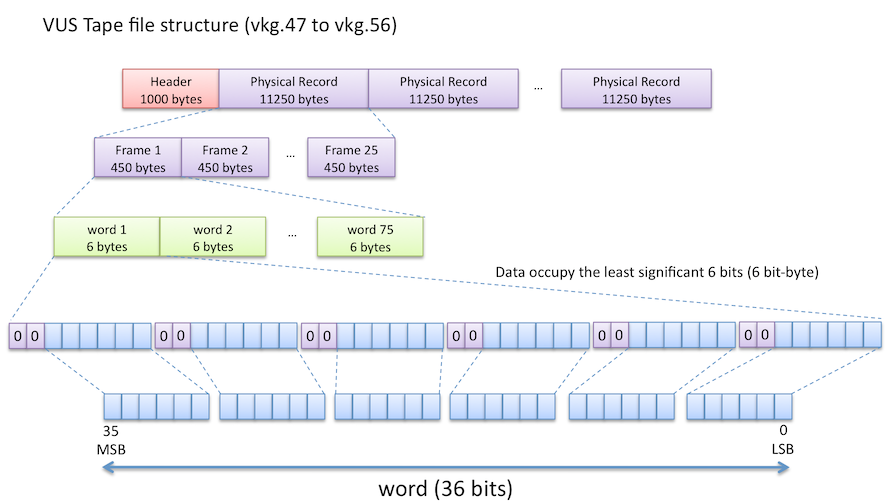
Header Format
Header format is described in the technical report 118 [6]:Bytes Information (16-bit integers except for bytes 3-8) 1-2 5 to identify Viking tape 3-8 original 7-track tape label 9-10 file number on the original tape 11-12 length, in bytes, of each data record to follow 13-1000 filled with zeroes
WORD Assignment
The first 18 words of 75 words in the frame contain the original header block from a SEISF file. The rest 57 words (= 57 x 36 bits = 2052 bits) are data block.SEISF Header Block
The format of the SEISF Header Block is described in SD-37D000 REV X PAGE L-54.4, L-52.3, and L-73.4 [7]. The bit length of the word in the document SD-37D000 is 32 bits length while the VUS tape is composed of 36-bit words. We assume that the first 4 bits of 36 bits are not used in the SEISF header block.The significant values in the SEISF header block are year and day-of-year. These two values are necessary to convert from GCSC count to Mars SOL. According to SD-37D000, the last two digits of the year is found in bits 12-19 of word 5, and the day-of-year is found in bits 20-35 of word 3, respectively.
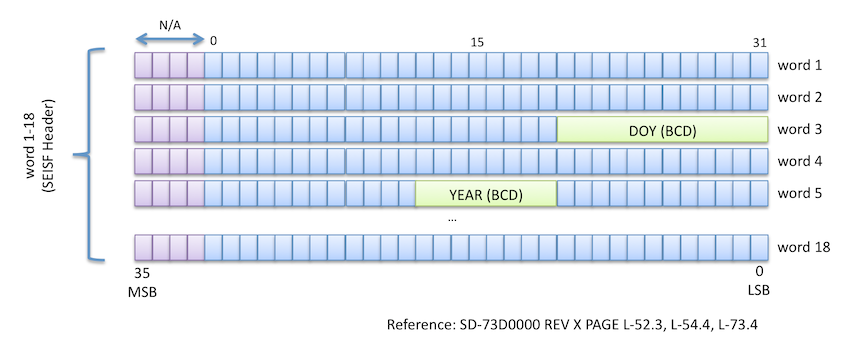
Data Block
The 2052-bit stream is used concatenating all words in the data block. Before concatenating, it is required that swapping the first 18 bits and the rest of 18 bits in a word like PDP endian.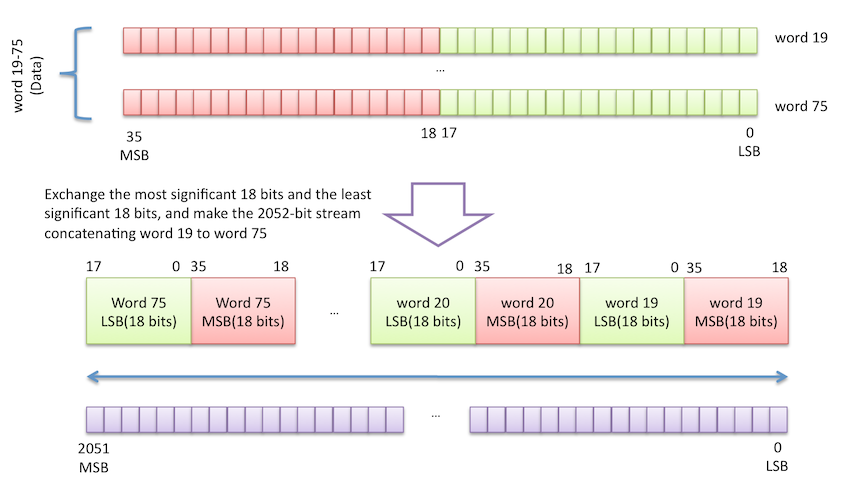
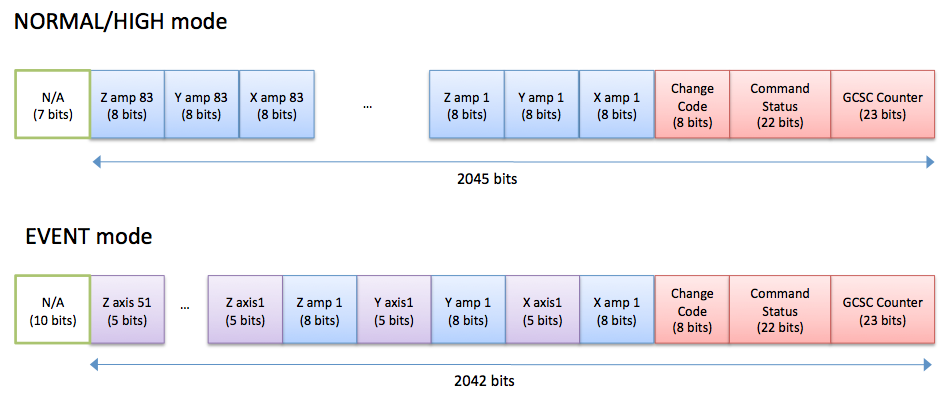
Interrupting string
Sometimes, there are multiple GCSC counts in the bit stream when the operational mode changes. If there is an interrupt string in the stream, the data is terminated once, and new data start. The interrupt string is 15-bit string: 101001101110000 followed by 5-bit source id, 24-bit GCSC count, 22-bit command status and seismic data. Note that the bit length of GCSC count is 24 bits unlike the first GCSC count in the stream. The first GCSC counter is 23-bit string, and it must be doubled when it is used.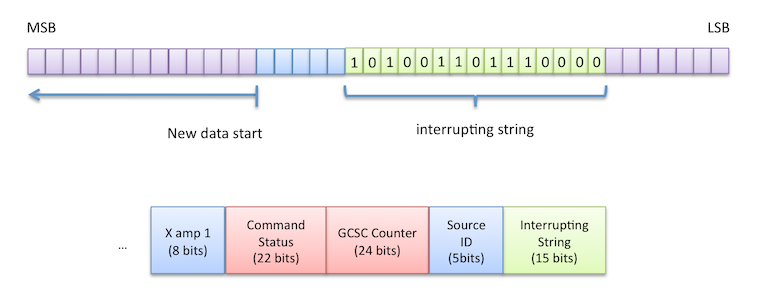
Data
Software
We prepare an example source code to extract vus data.Problem
There are some problems to interpret file format:- GCSC count is 24-bit length, but the first GCSC count includes only 23 bits in the data block
- The number of sampling data is sometimes different from EDR-2.





